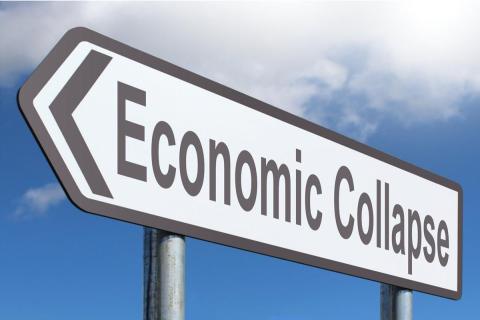This is a blueprint for how the dollar goes kaput

SIMON BLACK
With no agreement on spending anywhere on the horizon for the current fiscal year, the US Congress passed yesterday a ‘Continuing Resolution’ to keep the government temporarily funded for another six weeks.
This is nothing new; in fact, Congress has passed more than 50 Continuing Resolutions just since 2010, primarily because they almost NEVER manage to figure out the budget prior to the start of the fiscal year on October 1st.
But now there is far greater need to get it right than ever before.
I’ve been writing about this a lot lately, because, frankly, it is a critical issue. Failing to fix the spending problem spells disaster for the United States… and for the US dollar.
I wrote recently how the Congressional Budget Office projects the US government will add $20 trillion to the national debt through 2033.
$20 trillion is an absurd amount of new debt. And there are very few groups and institutions capable of loaning such a vast sum of money.
Social Security, for example, was one of the biggest buyers of US government bonds for several decades. And at this point they own roughly $3 trillion of the national debt.
But Social Security is now bleeding so much money that the program is no longer able to loan the Treasury Department any more money.
Foreigners also used to be highly reliable buyers of US Treasury bonds; even as recently as a few years ago, foreign ownership of US federal debt was more than 33%.
But foreigners are rapidly losing their appetite for US government bonds, and their ownership has plummeted to 22% very quickly.
Now, in many ways it’s good that the US no longer owes so much of its debt to foreigners.
Except that this only leaves one reliable institution remaining to buy up all that new debt: the Federal Reserve.
Remember, the Fed’s unelected Federal Open Market Committee (FOMC) holds periodic closed-door meetings to make decisions about the US money supply.
When they expand the money supply, they give it a very technical sounding name (like “Quantitative Easing”). But ultimately what this means is that they conjure trillions of dollars out of thin air with the click of a button.
It’s actually quite bizarre when you think about it; they make a few entries into an electronic ledger, and, poof, new money exists.
(It’s essentially the electronic version of having a printing press, which is why we often just say that the Fed ‘prints money’.)
The Fed then lends that money to the federal government, and the mechanism for this is buying US Treasury bonds.
Because the Fed has this special ability to print money– something which no one else is legally allowed to do– there is realistically no limit to how many bonds they can buy. If the government needs to borrow $20 trillion, the Fed has the capacity to print and lend $20 trillion.
Read more at: SovereignMan.com




























Comments
Inflation and the disappearance of the value of money
Comment
All according to plan
Comment
The Apocalypse
Comment